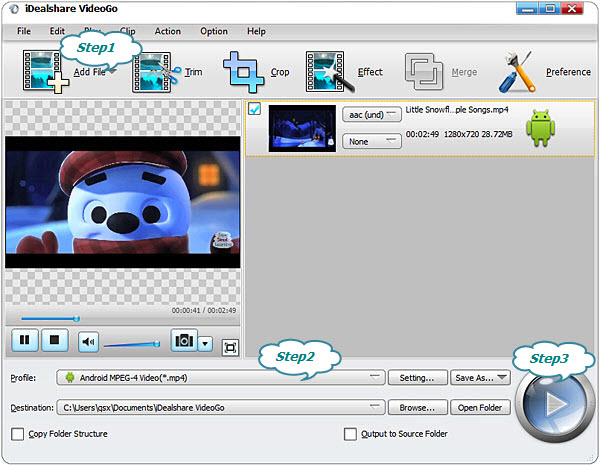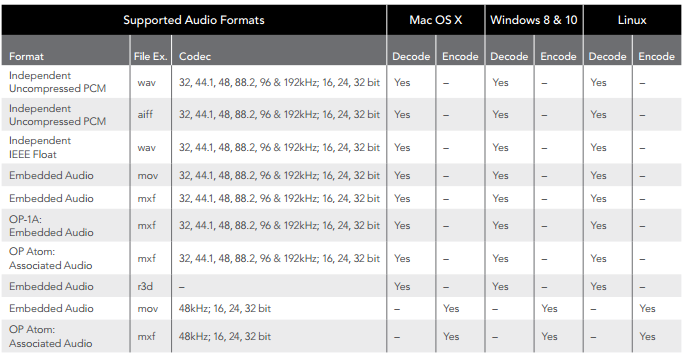

- #UNSUPPORTED VIDEO CODEC MP4#
- #UNSUPPORTED VIDEO CODEC FULL#
- #UNSUPPORTED VIDEO CODEC PRO#
- #UNSUPPORTED VIDEO CODEC SOFTWARE#
- #UNSUPPORTED VIDEO CODEC PROFESSIONAL#
There are six different codec versions, including XQ, HQ and LT.
#UNSUPPORTED VIDEO CODEC PROFESSIONAL#
Often used in professional post-production environments.
#UNSUPPORTED VIDEO CODEC PRO#
– Apple Pro Res Codecs – A high quality group of codecs, for minimised compression.
#UNSUPPORTED VIDEO CODEC MP4#
Compatible with MP4 (.mp4) and QuickTime (.mov) containers. Still widely used and supported by many platforms. – MPEG 4 Codec – Used to be the standard for high video compression before H.264. Very likely to be the future codec of choice. Offers more efficient compression algorithms and is suited to higher resolutions and formats, such as 4K and HDR. Commonly used for delivering/displaying compressed HD video across networks (internet). – H.264 Codec – Most popular video codec, with high flexibility for compression formats. Let’s take a look at some common video codecs and their containers:

Therefore, a container with an unsupported video codec may only output audio upon playback, as only the audio codec is supported. Some containers may only support certain elements of the contained data. It’s important to note that not all codecs are compatible with all containers. QuickTime, VLC and WMP Codecs and Containers
#UNSUPPORTED VIDEO CODEC FULL#
You can even play 2 full HD movies, one with MX Player and one with the built-in player (in pop-up mode) at the same time without any hickup. Using this you are in audio/video heaven with the new Note 10.1. Third-party media players (such as VLC) are popular and can be used for cross-platform video playback. I had the same issue with unsupported audio codec, solved with VLC player.

For example, the ‘QuickTime’ container uses the file extension ‘.mov’ and natively uses the ‘QuickTime Player’ application for media playback. Due to this, not all containers are supported by all media players. Video containers usually have an associated media player, which is specifically designed to understand and enhance them. Video containers package the separate data together to create a complete and functional video file, which is compatible with media playback applications. In addition, they contain audio codec data, metadata and other ancillary data, such as closed captions.

They ‘contain’ the data from several elements that make up a video file, including the video codec data. Containers are often referred to as their file extension name, such as ‘.mov’ or ‘.mp4’. What is a video container?Ī video container is also known as a video wrapper or video format. If audio is associated with a video, a separate codec may be used for compression. The most common video codec you’ll come across is H.264, which is widely used across many video applications. In relation to video, a codec encodes (compresses) video for storage or live transmission, then decodes (decompresses) the video for viewing, by reversing the encode process. The term ‘codec’ is short for ‘code-decode’.
#UNSUPPORTED VIDEO CODEC SOFTWARE#
Codecs contain one or many algorithms and can be ran on software or dedicated hardware. Commonly used for compressing video, the ultimate aim of a video codec is to reduce output size, while retaining the best possible quality. Logger.js:32 > Demu圎xception: type = CodecUnsupported, info = Flv: Unsupported codec in video frame: 2e logger.js:32_onDemu圎xception transmuxing-controller.js:333_parseVideoData flv-demuxer.js:647parseChunks flv-demuxer.js:295_onInitChunkArrival transmuxing-controller.js:264_dispatchChunks io-controller.js:419_onLoaderChunkArrival io-controller.js:503(anonymous function) fetch-stream-loader.js:158Ģlogger.A video codec is a type of computer program which encodes and decodes a video file or signal. Logger.js:32 > Demu圎xception: type = CodecUnsupported, info = Flv: Unsupported audio codec idx: 2e logger.js:32_onDemu圎xception transmuxing-controller.js:333_parseAudioData flv-demuxer.js:429parseChunks flv-demuxer.js:292_onInitChunkArrival transmuxing-controller.js:264_dispatchChunks io-controller.js:419_onLoaderChunkArrival io-controller.js:503(anonymous function) fetch-stream-loader.js:158 how can i fix the problem?įlvPlayer įlvPlayer.attachMediaElement(videoElement) when i execute the flvPlayer.load(), it throws the exceptions below.


 0 kommentar(er)
0 kommentar(er)
